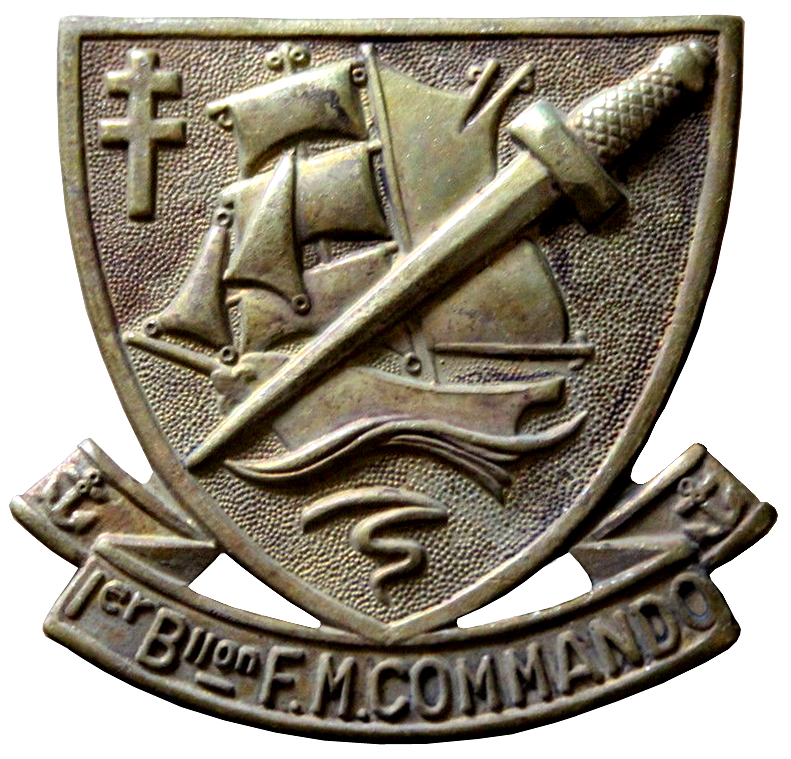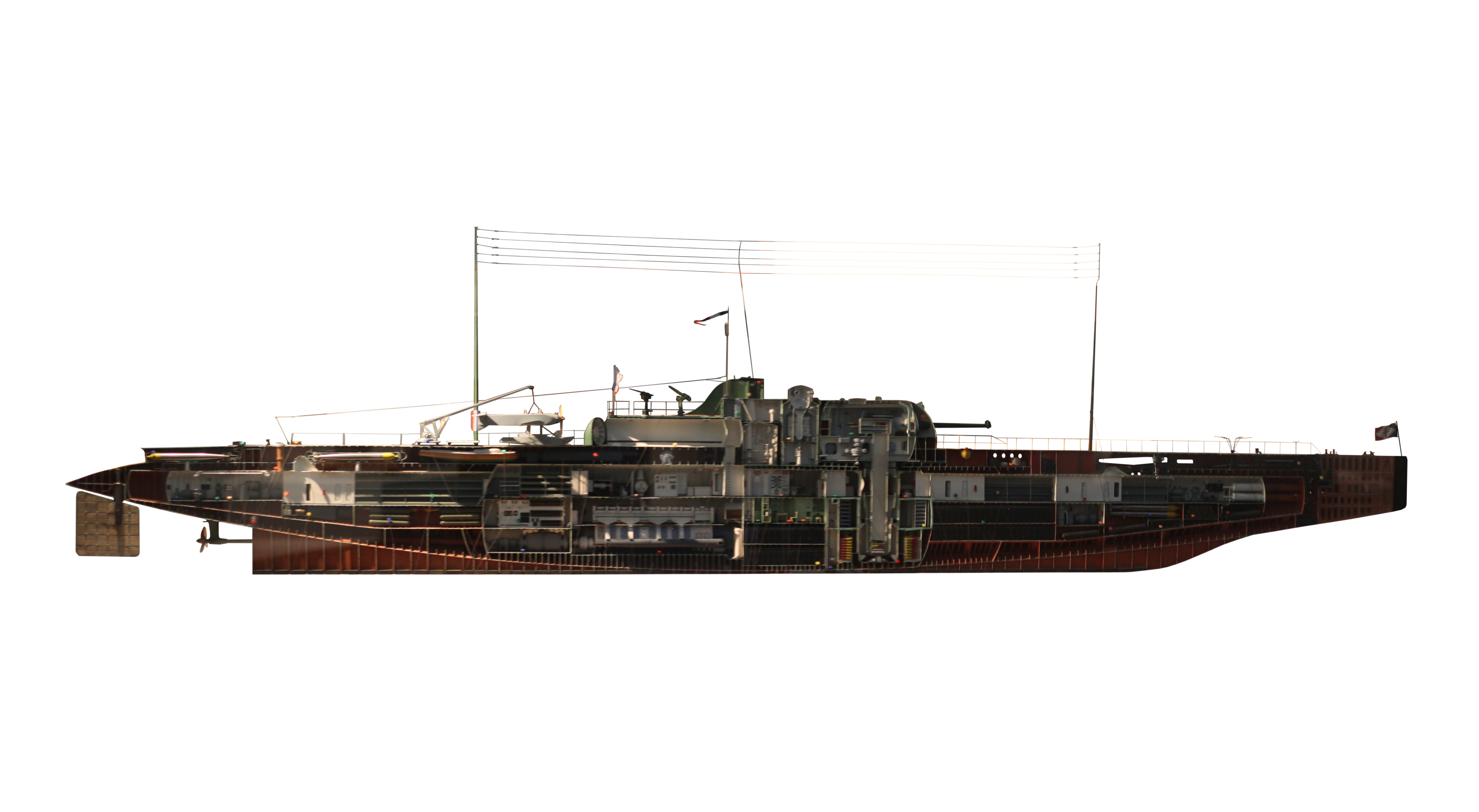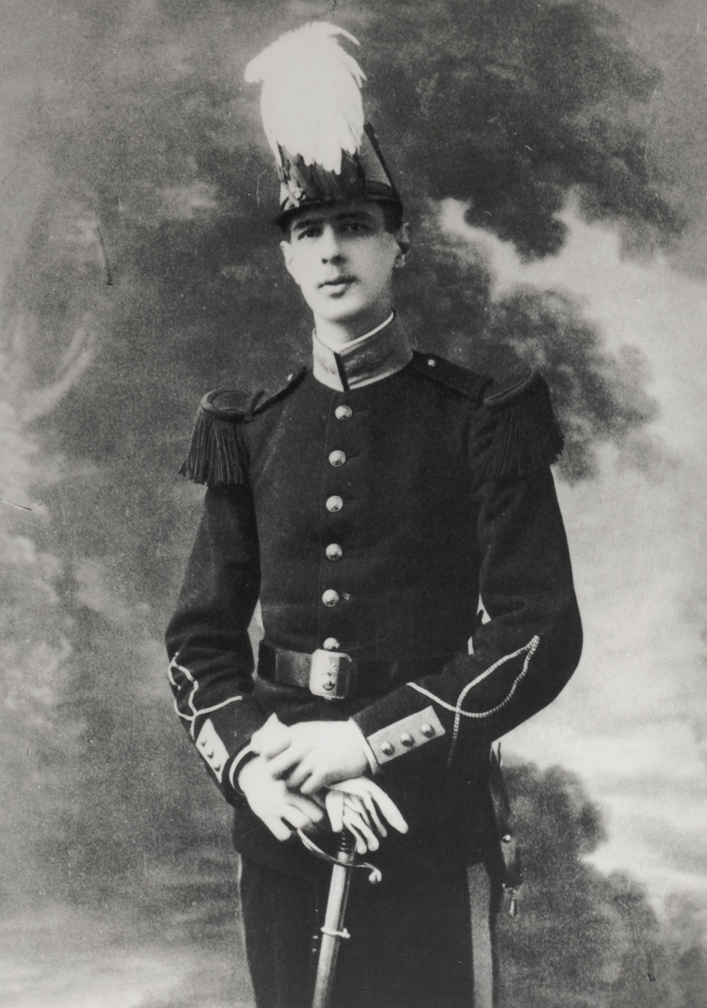|
Léon Gautier (soldier)
Léon Gautier (27 October 1922 – 3 July 2023) was a Free French soldier during the Second World War. Biography Early life and military career Gautier was born in Rennes, Brittany, in France, on 27 October 1922. At the start of the Second World War, he was working as an apprentice car body maker. He enlisted in the French Navy at the age of 17, and took part in the defense of the port of Cherbourg and the mouth of the Vire in Normandy as a gunner on the battleship ''Courbet''. He fled to the United Kingdom before the Nazi occupation of France. After learning about Free France in 1940, he decided to join Charles de Gaulle and participated in the 14 July 1940 parade in London with the Free French Naval Forces. Gautier also served on the merchant vessel '' Gallois'' and as a marine rifleman on the submarine '' Surcouf'', which operated in Africa and the Middle East. He fought with the 1er Bataillon de Fusiliers Marins Commandos, led by Lieutenant-Commander Philippe Kieffer, in ... [...More Info...] [...Related Items...] OR: [Wikipedia] [Google] [Baidu] |
Rennes
Rennes (; ; Gallo language, Gallo: ''Resnn''; ) is a city in the east of Brittany in Northwestern France at the confluence of the rivers Ille and Vilaine. Rennes is the prefecture of the Brittany (administrative region), Brittany Regions of France, region and Ille-et-Vilaine Departments of France, department. In 2021, its Urban unit, urban area had a population of 371,464 inhabitants, while the larger Functional area (France), metropolitan area had a population of 771,320.Comparateur de territoire Unité urbaine 2020 de Rennes (35701), Aire d'attraction des villes 2020 de Rennes (013) INSEE. The inhabitants of Rennes are called ''Rennais'' (masculine) and ''Rennaises'' (feminine) in French language, French. ... [...More Info...] [...Related Items...] OR: [Wikipedia] [Google] [Baidu] |
Vire (river)
The Vire () is a river in Normandy, France whose course crosses the '' départements'' of Calvados and Manche, flowing through the towns of Vire, Saint-Lô and Isigny-sur-Mer, finally flowing out into the English Channel. Its main tributaries are the Aure, the Elle and the Souleuvre. The outflow of the Vire has been canalized and forms the port of Isigny-sur-Mer. The poets of the Vire valley (''Vau de Vire'') are said to have given rise to vaudeville. Places along the river: * Calvados (14) : Vire, Pont-Farcy, Isigny-sur-Mer * Manche (50) : Tessy-sur-Vire, Troisgots, Torigni-sur-Vire, Condé-sur-Vire, Sainte-Suzanne-sur-Vire, Saint-Lô, Rampan, Pont-Hébert, La Meauffe, Cavigny Hydrology and water quality The generally brownish waters of the Vire are moderately alkaline In chemistry, an alkali (; from the Arabic word , ) is a basic salt of an alkali metal or an alkaline earth metal. An alkali can also be defined as a base that dissolves in water. A solut ... [...More Info...] [...Related Items...] OR: [Wikipedia] [Google] [Baidu] |
Invasion Of Normandy
Operation Overlord was the codename for the Battle of Normandy, the Allied operation that launched the successful liberation of German-occupied Western Europe during World War II. The operation was launched on 6 June 1944 ( D-Day) with the Normandy landings (Operation Neptune). A 1,200-plane airborne assault preceded an amphibious assault involving more than 5,000 vessels. Nearly 160,000 troops crossed the English Channel on 6 June, and more than two million Allied troops were in France by the end of August. The decision to undertake cross-channel landings in 1944 was made at the Trident Conference in Washington in May 1943. American General Dwight D. Eisenhower was appointed commander of Supreme Headquarters Allied Expeditionary Force, and British General Bernard Montgomery was named commander of the 21st Army Group, which comprised all the land forces involved in the operation. The Normandy coast in northwestern France was chosen as the site of the landings, with the ... [...More Info...] [...Related Items...] OR: [Wikipedia] [Google] [Baidu] |
Philippe Kieffer
Philippe Kieffer (24 October 1899 – 20 November 1962), '' capitaine de frégate'' in the French Navy, was a French officer and political personality, and a hero of the Free French Forces. Life and career Born in Port-au-Prince, Haiti, to an Alsatian paternal family and an English mother, Philippe Kieffer obtained a diploma at the La Salle Extension University in Chicago. World War II On 2 September 1939, aged 40, he volunteered for military service. He joined the French Navy, in which he was a reserve officer, a week later. He served on the battleship '' Courbet'', and at the headquarters of the Northern Fleet during the Battle of Dunkirk. He left for London on 19 June 1940 and joined the Free French Naval Forces (''Forces Navales Françaises Libres'') on 1 July 1940, the day they were founded. Speaking fluent English, he was asked to serve as a translator and cipher officer. Impressed by the techniques of the new British Commandos, formed in 1940, Kieffer requeste ... [...More Info...] [...Related Items...] OR: [Wikipedia] [Google] [Baidu] |
1er Bataillon De Fusiliers Marins Commandos
1er Bataillon de Fusiliers Marins Commandos was a Fusiliers marins (Sailor Riflemen) commando unit of the Free French Navy, raised in 1942, which served during the Second World War. Its initial Commandant was then-Lieutenant de Vaisseau (Captain) Philippe Kieffer of the Free French Navy, under whose command they participated in the Normandy landings in 1944. History Formation The creation of the battalion was initially planned for March 1941, but it was delayed until 1942. At this time, Troop 1, "Commandos Français", was formed with the intention of raising the unit to a battalion of 400 personnel in readiness for the expected offensive operations in Europe. Initially, the unit was headquartered in the vicinity of Portsmouth while undergoing training with other units at the Commando Training Centre at Achnacarry, Scotland. Initially, the battalion was organized into a headquarters section, medical, radio, and transportation sections, and three troops designated 1, 8 and 9, ... [...More Info...] [...Related Items...] OR: [Wikipedia] [Google] [Baidu] |
French Submarine Surcouf
''Surcouf'' was a large French gun-armed cruiser submarine of the mid 20th century. She carried two 203 mm guns as well as anti-aircraft guns and (for most of her career) a floatplane. ''Surcouf'' served in the French Navy and, later, the Free French Naval Forces during the Second World War. ''Surcouf'' disappeared during the night of 18/19 February 1942 in the Caribbean Sea, possibly after colliding with the US freighter ''Thompson Lykes'', although this has not been definitely established. She was named after the French privateer and shipowner Robert Surcouf. She was the largest submarine built until surpassed by the first Japanese I-400 class aircraft carrier submarine in 1944. Design The Washington Naval Treaty had placed strict limits on naval construction by the major naval powers in regard to displacements and artillery calibers of battleships and cruisers. However, no agreements were reached in respect of light ships such as frigates, destroyers or submarines. ... [...More Info...] [...Related Items...] OR: [Wikipedia] [Google] [Baidu] |
SS Gallois
SS ''Gallois'' was a French collier built in 1917 as ''Tynemouth'' and later ''Lord Aberconway''. She was one of seven merchant vessels which became stranded and then wrecked on Haisbro Sands off the Norfolk coast on 6 August 1941 during the Second World War as part of Convoy FS 559. History The ''Gallois'' was a steam merchant ship built in 1917 by Wood, Skinner & Company Ltd., Newcastle upon Tyne, England.The Ship-Wrecks off North East Norfolk by Ayer Tikus: Published by Ayer Tikus Publications; ASIN B0032Z2NU0 She was and long. Her yard number was No:197. She had been ordered by the Burnett Steam Ship Co. Ltd., (Burnett & Co) of Newcastle upon Tyne. Her original name was the ''Tynemouth''. In 1929 she was sold to Tredegar Associated Collieries & Shipping Co. Ltd (A Capel & Co., Ltd.) of Cardiff, Wales. This company renamed her ''Lord Aberconway''. In 1930 she was again sold to Établissenents Oden de Lubersac of Rouen, France, who renamed her ''Gallois''. At the outbreak ... [...More Info...] [...Related Items...] OR: [Wikipedia] [Google] [Baidu] |
Free French Naval Forces
The Free French Naval Forces (, or FNFL) were the naval arm of the Free French Forces during the Second World War. They were commanded by Admiral Émile Muselier. History In the wake of the Armistice and the Appeal of 18 June, Charles de Gaulle founded the Free French Forces ('' Forces Françaises Libres'', or FFL), including a naval arm, the "Free French Naval Forces" (''Les Forces Navales Françaises Libres'', or FNFL). On 24 June 1940, de Gaulle made a separate call specifically to servicemen overseas to join him, and two days later the submarine ''Narval'' entered Malta and pledged its allegiance to the FFL. PlayfairThe Mediterranean & Middle East, Volume I: The Early Successes against Italy (to May 1941)p. 137 On 30 June, De Gaulle was joined by Vice-Admiral Émile Muselier, who had come from Gibraltar by flying boat. Muselier was the only flag officer of the French Navy to answer the call of De Gaulle. The French fleet was widely dispersed. Some vessels were in port i ... [...More Info...] [...Related Items...] OR: [Wikipedia] [Google] [Baidu] |
Charles De Gaulle
Charles André Joseph Marie de Gaulle (22 November 18909 November 1970) was a French general and statesman who led the Free France, Free French Forces against Nazi Germany in World War II and chaired the Provisional Government of the French Republic from 1944 to 1946 to restore democracy in France. In 1958, amid the May 1958 crisis in France, Algiers putsch, he came out of retirement when appointed Prime Minister of France, Prime Minister by President René Coty. He rewrote the Constitution of France and founded the French Fifth Republic, Fifth Republic after approval by 1958 French constitutional referendum, referendum. He was elected President of France later that year, a position he held until his resignation in 1969. Born in Lille, he was a decorated officer of World War I, wounded several times and taken prisoner of war (POW) by the Germans. During the interwar period, he advocated mobile armoured divisions. During the German invasion of May 1940, he led an armoured divisi ... [...More Info...] [...Related Items...] OR: [Wikipedia] [Google] [Baidu] |
Free France
Free France () was a resistance government claiming to be the legitimate government of France following the dissolution of the Third French Republic, Third Republic during World War II. Led by General , Free France was established as a government-in-exile in London in June 1940 after the Fall of France to Nazi Germany. It joined the Allies of World War II, Allied nations in fighting Axis powers, Axis forces with the Free French Forces (), supported the French Resistance, resistance in German military administration in occupied France during World War II, Nazi-occupied France, known as the French Forces of the Interior, and gained strategic footholds in several French colonial empire, French colonies in Africa. Following the defeat of the Third Republic by Nazi Germany, Marshal Philippe Pétain led efforts to Armistice of 22 June 1940, negotiate an armistice and established a German puppet state known as Vichy France. Opposed to the idea of an armistice, de Gaulle fled to Brit ... [...More Info...] [...Related Items...] OR: [Wikipedia] [Google] [Baidu] |
German Military Administration In Occupied France During World War II
The Military Administration in France (; ) was an Military Administration (Nazi Germany), interim occupation authority established by Nazi Germany during World War II to administer the occupied zone in areas of northern and western French Third Republic, France. This so-called ' was established in June 1940, and renamed ' ("north zone") in November 1942, when the previously unoccupied zone in the south known as ' ("free zone") was also occupied and renamed ' ("south zone"). Its role in France was partly governed by the conditions set by the Armistice of 22 June 1940 after the success of the leading to the Battle of France, Fall of France; at the time both French and Germans thought the occupation would be temporary and last only until Britain came to terms, which was believed to be imminent. For instance, France agreed that its French prisoners of war in World War II, soldiers would remain prisoners of war until the cessation of all hostilities. The "French State" (') replace ... [...More Info...] [...Related Items...] OR: [Wikipedia] [Google] [Baidu] |
French Battleship Courbet (1911)
''Courbet'' was the lead ship of Courbet-class battleship, her class of four dreadnought battleships, the first ones built for the French Navy. She was completed shortly before the start of World War I in August 1914. She spent the war in the Mediterranean, where she helped to sink an Austro-Hungarian cruiser, covered the Otranto Barrage that blockaded the Austro-Hungarian Navy in the Adriatic Sea, and often served as a flagship. Although upgraded several times before World War II, she was not considered to be a first-line battleship by the 1930s and spent much of that decade as a gunnery training ship. A few weeks after the Battle of France, German invasion of France on 10 May 1940, ''Courbet'' was hastily reactivated. She supported Allies of World War II, Allied troops in the defence of Cherbourg in mid-June, taking refuge in England shortly afterwards. As part of Operation Catapult, the ship was seized in Portsmouth by British forces on 3 July and was turned over to the Free F ... [...More Info...] [...Related Items...] OR: [Wikipedia] [Google] [Baidu] |





